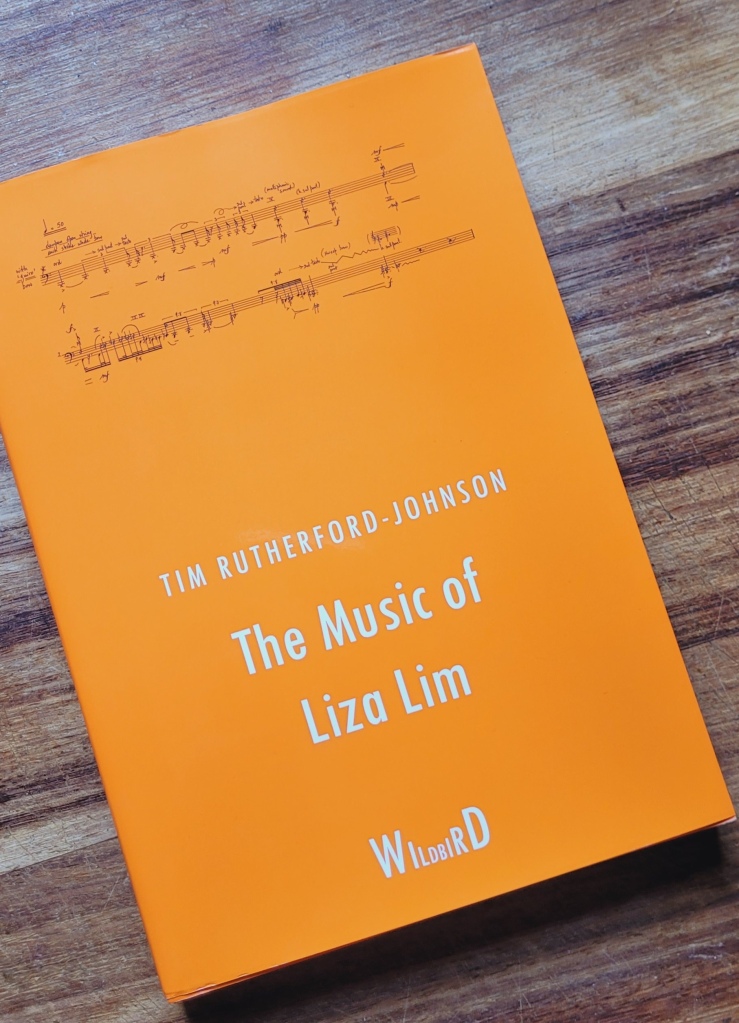
Colin Alexander, cello
Heather Roche, clarinet
Eva Zöllner, accordion
LSO St Luke’s, London | 14 January 2023
For her LSO Jerwood Composer+ showcase event, Hollie Harding curated an elaborate event on the theme of memory, culminating in her thirty-minute piece for clarinet, accordion and cello, Theories of Forgetting. Six pieces were given from the stage – as well as Harding’s, these were Christophe Bertrand’s Dikha, Laurence Crane’s Riis, Joanna Bailie’s Trains, Johan Svensson’s double dubbing (firefly song) and Bent Sørensen’s Looking on Darkness. Two other pieces were projected around the staged events: pre-concert, Pauline Oliveros’s Mnemonics II could be heard in the hall, and during the interval James Saunders’ overlay (with transience) was playing in the bar, with a video by Harding. My first live concert of the year, it was certainly a beautiful evening, albeit a slightly perplexing one; I’ll come to that in a bit.
For now, the good and very good bits. Riis is probably my favourite piece of Crane’s and is always a joy to hear. This version (prepared for tonight) with accordion and sine tones instead of organ was wonderful: there was a beautiful tension between the accordion and sine tones, the former played almost completely still to match the clean lines of those long, shimmering chords. I could live in the first one forever. Crane himself was greeted with a roar of acclaim when he came to take his bow.
Svensson’s double dubbing was also great: and a new discovery – I didn’t know anything of his before this. I loved the use of piezo buzzers, which in light and sound resembled variously constellations of fireflies, alarm bells, a chirping hedge of fledgling sparrows, a beeping hospital ward and more. Clarinet and accordion played with and among them, threading, outlining, plotting, ornamenting. A really clever, really compelling piece.
Svensson’s piece highlighted another great aspect of Harding’s curation – the sensitive and active use of lighting in every piece. Harding took great care to ensure that this concert was more than a ragtag collection of pieces, but worked as a coherent whole; and in Alexander, Roche and Zöllner she had three outstanding players well able to meet its various challenges. Svensson’s was the only work in which lighting was prescribed, but in all five others St Luke’s ample and varied lighting rig (both onstage and overhead) was used extensively: I particularly liked the array of giant coloured foglamps around the stage and the first light of morning feeling captured at the beginning of Theories of Forgetting. The use of Oliveros and Saunders in the gaps around the concert came from a similar attention to detail, but these were less successful for me. Neither was especially audible over the typical pre- and mid-concert hubbub, and this was especially problematic for Saunders’ piece, which depends so much on slight variations in sounds and therefore close attention. That said, I would love to see this idea of adding interstitial pieces continued and made to work.
There was more to like, too. Joanna Bailie’s take on mixing field recordings and live instruments is always interesting; Trains is a particularly odd example that I need to spend more time with to really work out. Eleven recordings of trains are modified to create a kind of chromatic scale, against which a solo cello plays – first – selected pitches that subtly colour the recordings and then more involved interventions, including a long quote from the Gigue to Bach’s Cello Suite no. 5 in C minor. (Marked in the score: ‘It’s Bach!’) Why? Who knows, but it kind of works – the tonality of the Bach meets that of the train in some way; and one can interpret in it a connection to the concert’s theme of memory.
Dhika, by the late Bertrand, was a curious opener: its second half in particular lies on the gnarly end of the new music spectrum – almost uniquely so for this concert. I loved the first half, with its echoes and multiplications of the clarinet into sumptuous, lyrical textures, but the second (featuring a switch to bass clarinet) felt a little more like new-music-by-numbers and didn’t sit so well with what followed. Its closest counterpart was probably Bent Sørensen’s lovely solo accordion piece, Looking on Darkness – both pieces take a melancholy tone – but whereas Sørensen’s faded haltingly away, like the half-keyed notes at the ends of its phrases, Bertrand’s rose aggressively, attempting to conquer something rather than let it go.
The former was certainly closer to the spirit of Harding’s substantial Theories of Forgetting, which closed the concert. The piece began in a ‘voyage of self-archaeology’, combing through old Dictaphone recordings, cassette tapes, family photographs and other memories. These are treated across four movements that are quite self-contained, yet which add up to something a little more symphonic over the work’s thirty minutes. ‘Remnants’ revisits a harmonic process from a twelve-year-old composition, developing it in new ways; ‘Revolve’ turns to decaying Dictaphone recordings, with damaged fragments of teenage singing barely preserved on them and brought to new, jittery life by the live instruments; ‘Bijou’ remembers a favourite song of Hardings’ mother (presumably the Queen track of the same name, including grand Brian May-esque gestures); and ‘Afterness’, which passes all three movements through another round of remembering and erosion. Harding’s language is humble and attractive, and suits the generally warm nostalgic glow of her concept: the loss that accompanies forgetting is something to accept; she waves fondly as the objects and sounds of her childhood recede from view. Like the opening chord of Riis, it’s a very nice place to be. But it’s an ephemeral one too, lighter than air. In the end, although this was an evening filled with lovely things, I travelled home feeling slightly empty, the music itself already fading into memory.



